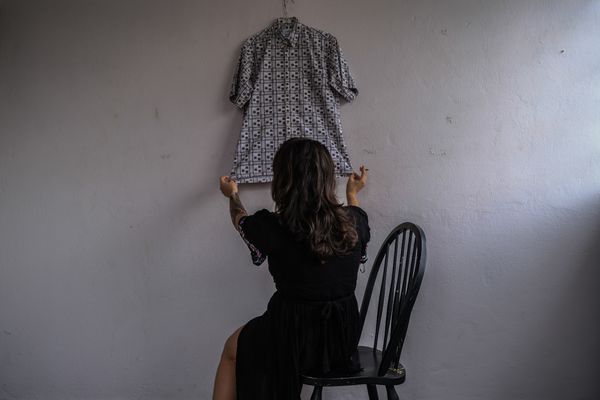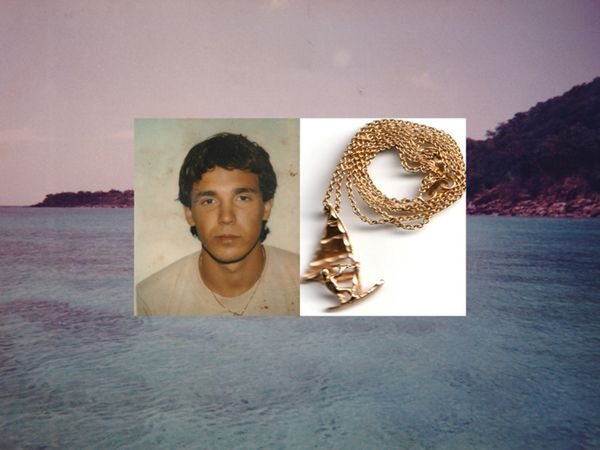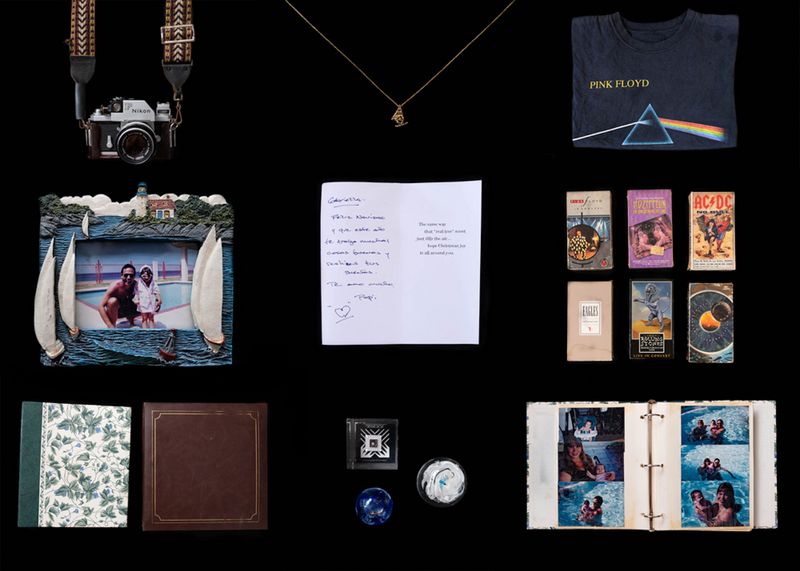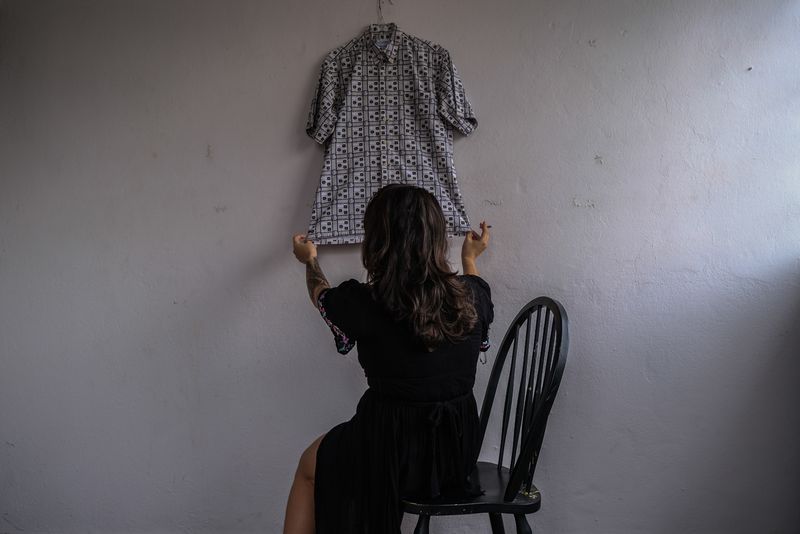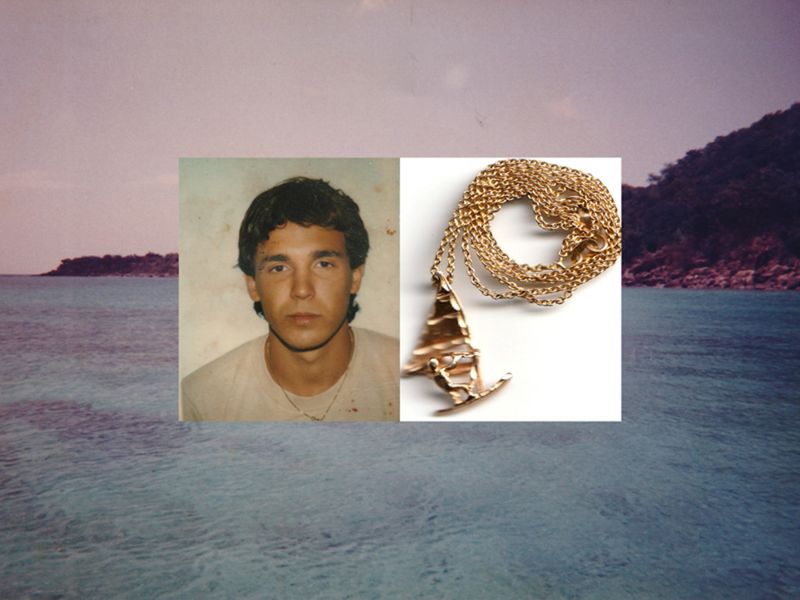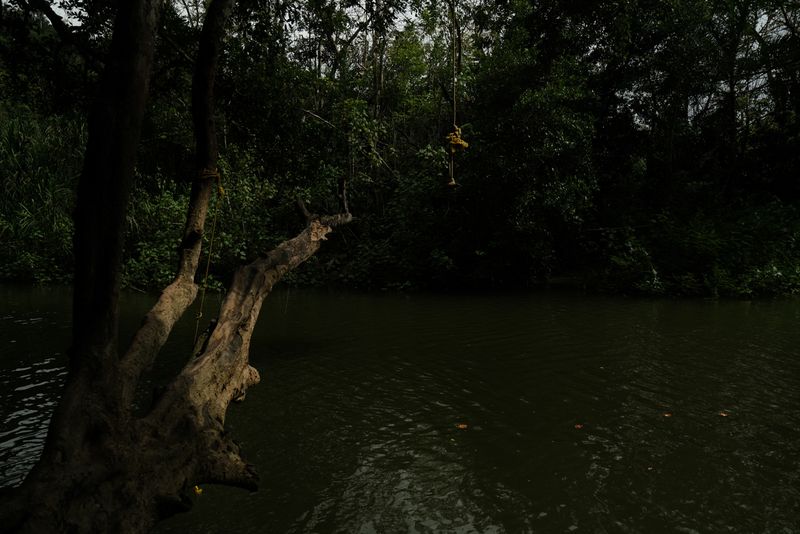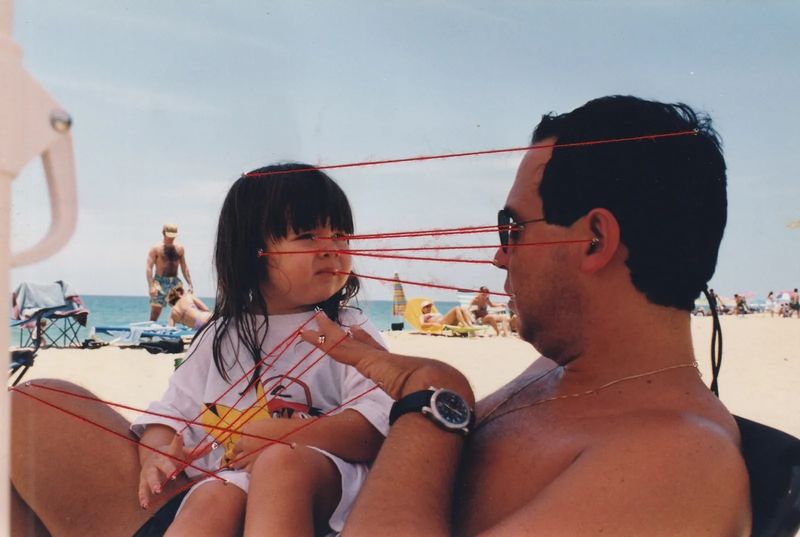The Deep Psychological Undercurrents of Trauma
-
Published17 Dec 2020
-
Author
In turmoil over her father’s sudden death in Puerto Rico, Gabriella N. Báez began to seek traces of him around the island to better understand his passing and confront her personal catharsis of mourning.
In turmoil over her father’s sudden death in Puerto Rico, Gabriella N. Báez began to seek traces of him around the island to better understand his passing and confront her personal catharsis of mourning.
In the year following Hurricane María, approximately 279 suicides were recorded in Puerto Rico. On 11 July, 2018, just two months before the first anniversary of the hurricane, Gabriella N. Báez’s father committed suicide on the Caribbean island. Ojalá nos encontremos en el mar is a photographic documentation of the psychological undercurrents of trauma that provoke suicides in the aftermath of Hurricane María. Gabriella looks closely at the challenging emotions through photographing her father’s inherited objects as well as family archives.
Previous to photographing your project Ojalá nos encontremos en el mar, had you focused your camera on your family or yourself?
When I first began photographing, I experimented with self-portraiture, a lot of it through reflections in mirrors; but when I became serious about creating images as a career I stopped taking images of myself.
My lens started looking outwards trying to capture the landscape of social unrest here in Puerto Rico in 2017, mostly documenting protests against the federal imposition of PROMESA (the Puerto Rico Oversight, Management, and Economic Stability Act) a fiscal control board appointed by the United States Congress that dictates most of the financial decisions of the island. This led to a nationwide student strike with weekly protests. Later that year, Hurricane María struck and radically transformed the island in ways we are still reeling from.
During this time, I was still in the beginning stages of learning photography and building a career. After the hurricane, I spent most of my days indoors only photographing the day to day realities of the hurricane’s destruction and the government’s failed emergency response.
It wasn’t until my father’s death that I realised the impact the hurricane had on me and the island. There was a lack of coverage regarding mental health and suicide during the aftermath of the hurricane. This pushed me to look inwards and at the experiences of my loved ones through the camera, this time with more conviction and responsibility regarding the importance of telling my own story.
It must have been incredibly challenging to begin to work on this project - could you share any insights with us?
It’s been a long and rigorous process. At first it was very cathartic, I had so many intense emotions that I didn’t know what to do with; so I started taking pictures as an outlet to transform what I was feeling into something palpable and present. I began by photographing the items my father left behind and working with “this archive of objects”. This helped me slowly build a photographic memory bank of the life we got to share.
Then, I intervened this archive as a way to bring those images to the present, marking them with a new time frame, within the now. I was exploring and revisiting this stage for a long time before delving deeper into the project. It was only when I was pushed to start writing and face some aspects of my own grief with the loss of my father I realised I was avoiding that my project really blossomed into what it has become today. I had to come to terms with the fact that at the beginning of the project I was glorifying the memory of my father and that I had to learn to humanise him, understand him as a vulnerable human like myself.
As I began writing and re-experimenting the various stages of grief within the post-hurricane context, my imagery became more focused on death and dying, the perceived darkness and hopelessness of it. I think this was a direct reflection of my own experience with depression and trauma, it made me realise that I had been close to my father’s fate. That working to heal these deep wounds was the only way to save myself.
At this time I was reading The Body Keeps The Score by Dr. Bessel van der Kolk, a book on the mind-body relationship in traumatic experiences and healing, and opted for therapy as a path to begin dealing with these issues. Revisiting the relationship with my father and aiming to heal our complicated relationship was extremely challenging. He wasn’t here anymore: how could I resolve my issues with him? It’s still a question I am exploring and learning to cope with.
My latest solace has been dreaming. In the past years following his suicide I’ve been dreaming more often and writing my dreams down in a notebook I’ve kept since 2015. It is through dreams that I am able to access my father, at least a faint memory of him or the hope that I am still holding on to seeing him again.
I’ve photographed this project through the ever shifting emotions of grief and I’ve let these emotions guide my intimate imagery and writing. I’m also still always watching out for my needs in this process of coping and healing.
As you have worked on your personal story related to your father you must have learned about other individual narratives - would you say this has played any impact on your narrative or photographic approach - could you explain?
The experience of one or some, can highlight the experience of many. Throughout this process, I’ve come to understand the amount of intimacy, vulnerability, and time that is needed to dive deep into the life of someone. My goal in storytelling is to accompany a person; process and experience through the camera, and be there as long as it needs to take to turn a story into an accurate representation.
This project has shed light on an interest I have in long term reporting. Exploring identity and emotional processes takes time, as well as establishing a relationship, collaborations, and exchanges with participants. I want to be there as long as our (the participant’s and my) boundaries permit.
Since you have photographed many of your father's personal objects, I began to wonder how was your process of selection? What elements have you considered?
After my father’s funeral, I was given a box full of his belongings. As I went through each item I selected those that had some kind of shared memory between us or those that directly spoke to me about who my father was. My father wasn’t much of a consumer and he only kept items that were in some way dear to him. This was the only way I could physically photograph the remains of my father.
Photographing the items was just the start, a scratch on the surface to begin this project. Then came the archive.
What have been your motivations behind intervening your family photo archive?
At first I was so overwhelmed with the amount of material that was available to me. My family really surprised me with their archival skills and the incredible amount of printed documentation they had produced and saved. After scanning them, I started experimenting with the possibilities of what they could become.
After making the first image of the threads, I realised that I was looking for our relationship in the images. I wanted to bring the past into the present. I thought of the beautiful relationship we had when I was a child: I wanted to transform it into something that I could see and touch. Through the threads, I wanted to establish connections between us, look for what we had in common; feel the needle piercing the photo paper as the memories flooded through my head.
The archive images alone were not enough for me, I had a relationship with them and had strong emotions relating to them. I felt the need to intervene and puncture them, evidencing physically those emotions.
Do you see this project becoming a book in the future? Any set plans in mind for it yet?
Yes! In spite of the many ideas, changes, and transformations in these past two years of project building, the final output has always been envisioned in book format. The multiple dimensions of this work can only be harmonised into a book. The images and text merit intimacy and a slow pace.
I envision the book the size of a diary: an item you can put in a backpack, tote bag, or large purse; portable enough to take with you and read in your intimacy. I want the format of the book to feel raw, as if you were reading straight out of my notebooks.
Publishing this project is definitely my goal for 2021 as a posthumous gift for my father on the third anniversary of his death.
-------------
Gabriella N. Báez is a documentary photographer based in San Juan, Puerto Rico covering stories across the Caribbean reagion. Her personal projects focus on intimate topics about family, migration and self-portraiture. Gabriella as a young practitioner has already been published in Reuters, Bloomberg, The New York Times, CNN, and The Nation. She is currently a Magnum fellow, an IWMF Howard G. Buffett Fund and Women Photograph + Nikon grantee. Follow her on Twitter and Instagram.
Verónica Sanchis Bencomo is a Venezuelan photographer and curator based in Hong Kong. In 2014, she founded Foto Féminas, a platform that promotes the works of female Latin American and Caribbean photographers. Follow her on Twitter and Instagram.
-------------
This article is part of In Focus: Latin American Female Photographers, a monthly series curated by Verónica Sanchis Bencomo focusing on the works of female visual storytellers working and living in Latin America.

